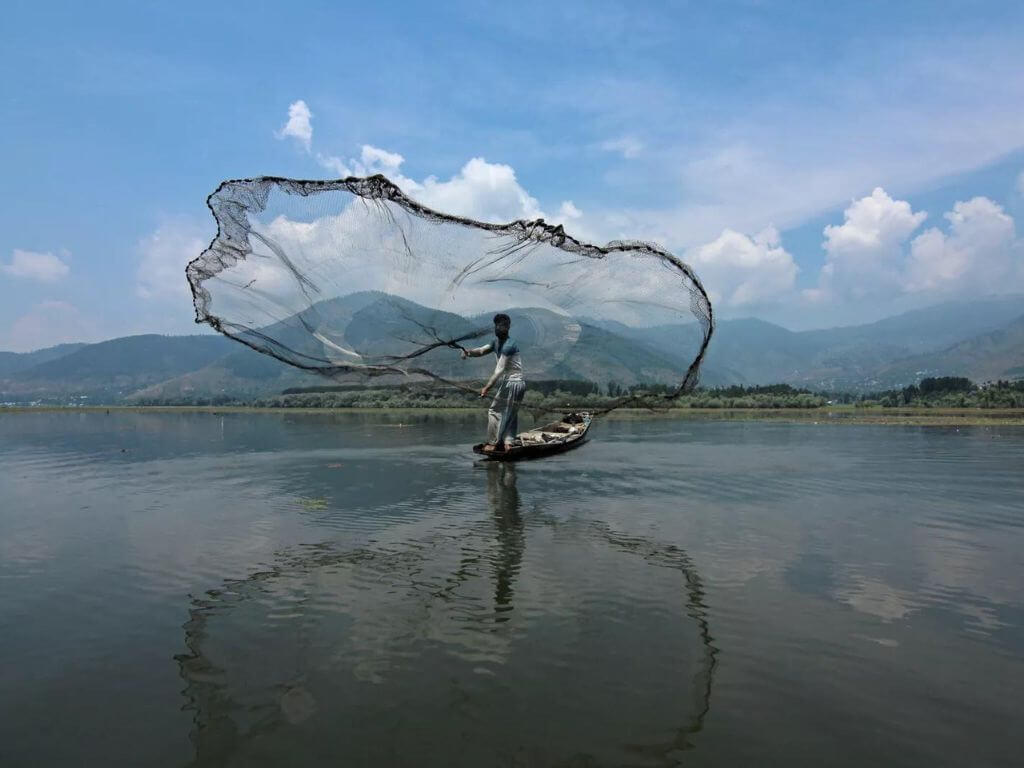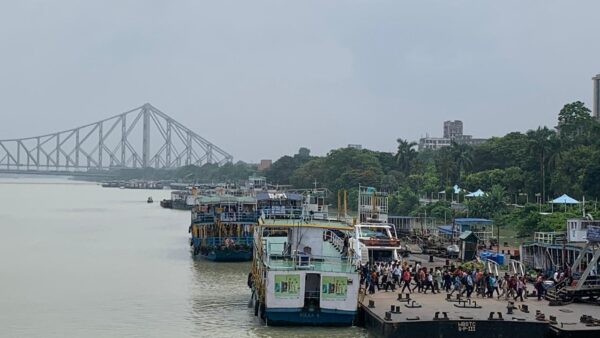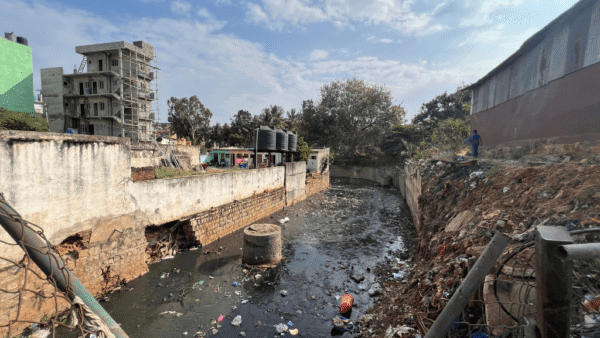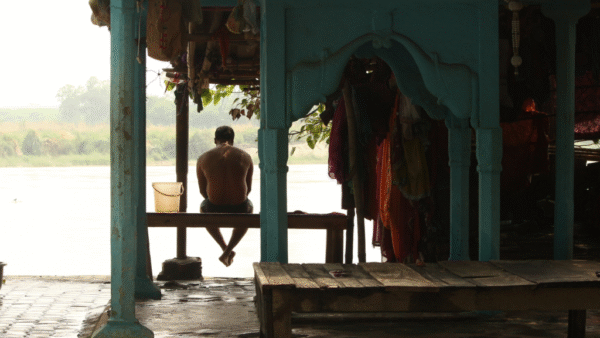Environment, or more broadly ecology, are subjects left to academicians and experts. This is fine for domain knowledge but ecology affects every single one of us in the way we live, work and play. Disregarded rivers, polluted air, rampant construction on natural areas and more touch the lives of everyone, often with staggering impact in the era of Climate Change as extreme weather events occur with greater frequency and intensity. There is a need to have more and deeper conversations around these subjects but in a manner that draws people’s attention and inspires them.
Rivers of Life, an initiative by the Azim Premji University in Bengaluru, has sought to do this through music, art and stories. The two-week-long festival-exhibition which began on November 2, 2022, aims to rekindle awareness around the idea that civilisations even in cities have been inherently connected with rivers. The exhibition does this through extensive documentation that has culminated into displays, workshops, musical evenings, and talks by experts. A group of interns created a mural at the festival with guidance from artists and other participants. The photographs taken by interns during their field work for this project – on themes such as “Rivers as cradles of civilisation, “Threats faced by our rivers” and “Stories of hope and movements around rivers” – have been displayed at the exhibition.
Rivers of Life aims to start conversations among the country’s youth about rivers in our cities. Kunal Sharma, faculty member at Azim Premji University, who has worked on issues of ecology and conservation across India for decades, speaks to Question of Cities about the initiative and the narratives around rivers.
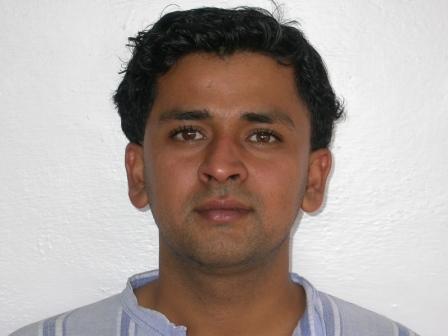
Photo: Azim Premji University website
What was the inspiration for Rivers of Life?
We wanted to bring greater consciousness and awareness about rivers among all strata of society, especially the youth, but in ways they have not experienced before. We wanted to show them in their most vulnerable form, yet celebrated and hopeful form. We are not feigning blindness to what we are losing, instead focusing on how we are destroying where we come from – rivers. The Rivers of Life exhibition is a point of contact for all these ideas.
We met several people in the process of putting the exhibition together who inspired us to tell their stories — an old retired teacher who has been cleaning the Tamraparni river in Tirunelveli (Tamil Nadu) for 30 years; a doctor in Agra who has been trying to clean the Yamuna; a young woman who documented the river in Binsar in Uttarakhand. But this is beyond individuals, we feel a sense of collective ownership towards this project. The interns are valuable stakeholders too – a student from Delhi University, an intern who left a high-paying job to volunteer for us, and many more. Our purpose is to get people who are deeply interested in the issue of rivers collectively involved and reach students. It is like a journey; if you want to go on a journey, you have to simply begin. This is that beginning.
How did the initiative come together? How are the exhibition and its surrounding events structured and what do you want to convey?
Azim Premji University’s focus on Climate Change included a strong component of public outreach from the start. We chose a subject that seemed ideal – rivers – as it would not only be familiar to everyone but also interesting, and offer opportunities to provide a new understanding. We live in a world where it seems like everyone knows everything and everyone knows the same things. There’s Google but it is boring beyond a point. We want the youth to discover new knowledge about rivers and also enjoy it. Why do we not see that our cities have come up around rivers?
The event is like a mela, structured around stories of hope and bringing out the fact that rivers are cradles of civilisation, the threats they face, and to show that there’s hope even through the peril. We tried to bring this in with the experiences of young people, experts, citizens’ groups and NGOs that specifically work in this arena. We want to create awareness, but we also want to provide some connections to rivers. For example, we are talking about Narmada as a spiritual journey, sharing parts of a person’s diary where they have written about the struggle.
We want the material to be accessible to students, in thousands, so they become aware of ecology and especially about rivers. We have consciously invested in getting schoolchildren by buses, even from 50-60 kilometres away, from as far as Tamil Nadu and Telangana, students from government and aided schools, and from elite private schools – women from self-help groups, community activists, and many more.
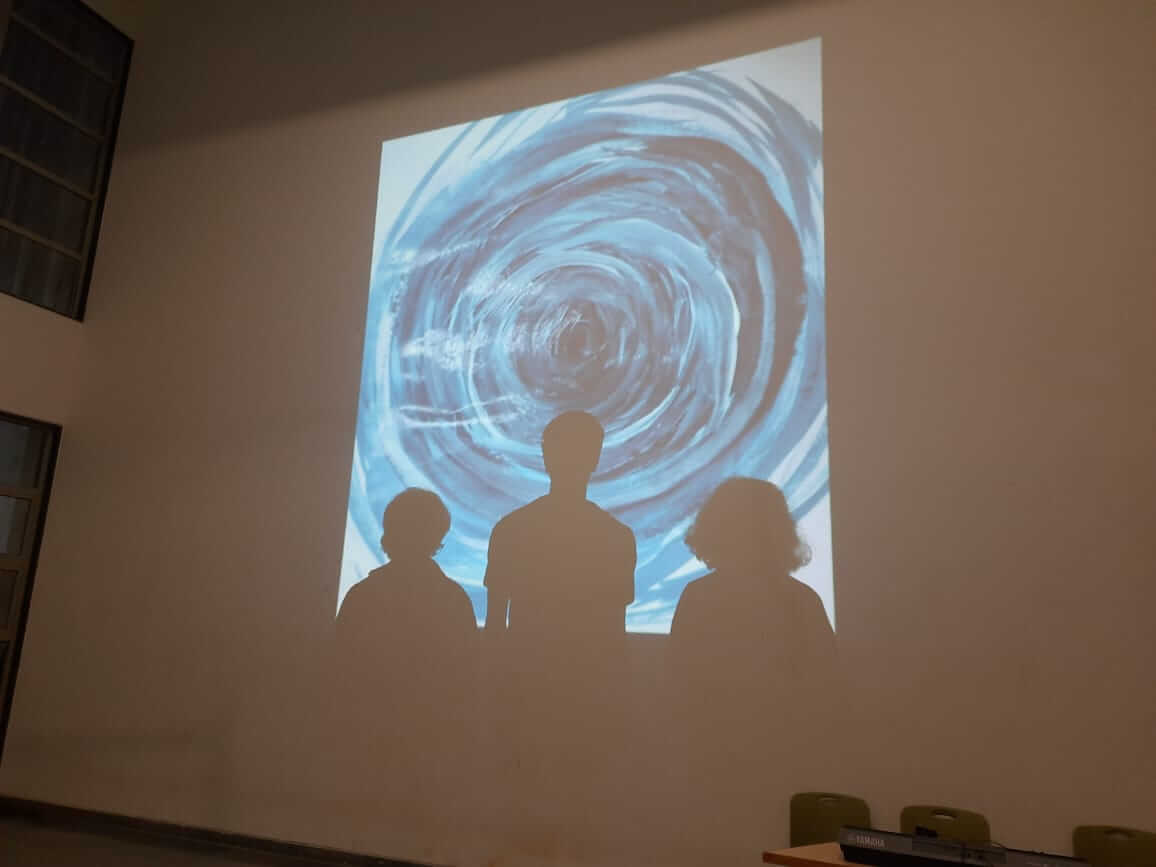
Photo: Apoorva Jha
Why is there a need to talk about the rivers in our cities?
One of our interns, Jeet, wrote the following lines which encapsulate everything that I want to say.
Nadiya shehro se nahi behti hai.
Sheher baste hai nadi kinaare.
(Rivers don’t flow through cities. Cities settle on banks of rivers)
Through the course of our work on the Tamraparni, the collector once pointed at the river and said, “Look, how pristine the river looks.” It did. We went downstream and saw some plastic. Then we went further downstream and saw that a village had created a conservation reserve for herons and pelicans after being motivated by a retired Supreme Court judge. The river water is first drinkable, then it is batheable, and we observed that it gets polluted when it passes through a city and starts to rejuvenate itself as it flows out of the city. There must be something happening there. Subrat Behera, who works at the Wildlife Trust of India, is from a village and will speak about how villagers are better conservationists than urban dwellers. People who are actually affected are left out of the conversation on rivers.
What was the response from the communities and NGOs you approached?
Every person we reached out to is an expert in their field. It was quite an eclectic mix of people bringing in their own experiences. The journey of putting this together was an education. There’s the national award-winning nature educator from the middle Andamans, Chanchal Singa Roy, who agreed to conduct a session. Once a boat overturned at Wular with our intern in it and cameras got ruined. An intern was barely 100 metres from a communal riot in Udaipur and had to be escorted to safety. An intern from Jawaharlal Nehru University (JNU) was to leave for Hooghly but trains were being burnt during the Agnipath protests. But this has been a journey. It was not about success or failure, but creating information about rivers in any form, including musical performances.
We want to celebrate our rivers in every way. The most enjoyable part is that we have covered rivers from different angles because our volunteers come from different walks of life. There was someone who worked on gender and without explicitly discussing it, it reflected in their work. Siddharth Agarwal from Veditum helped us immensely and Karthik who helped us connect with different people. We want the youth to realise how bad the condition of our rivers is and mend their relationship with rivers. So, we are keeping it simple. We are getting artists from Uttarakhand to sing songs and tell tales about how the dam brings water into their childhood homes. This relationship helps in placemaking and also gives you a direction or geography of your life.
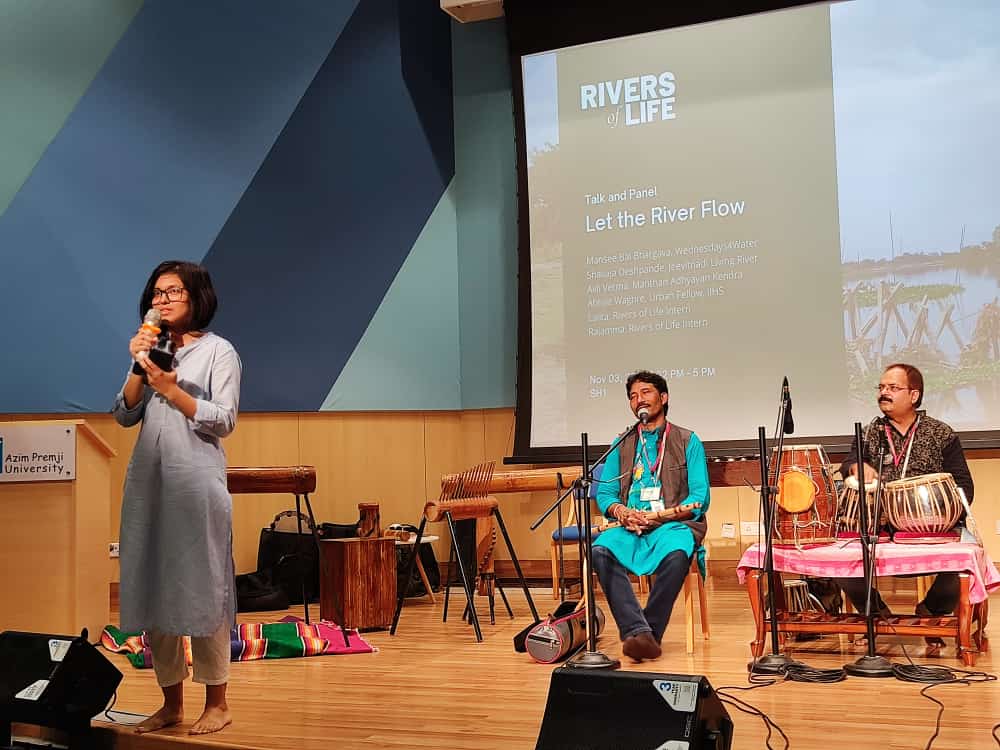
Tell us something about the rivers and water bodies of Bengaluru, and how the exhibition addresses some of the issues
Rivers of Life looks at the Pennar river system that lies at the north of Bengaluru. Our intern Saksham documented Vrishabawathi river by tracking it. Several Bengaluru organisations like Paani.earth have collaborated with us. We covered the Cauvery extensively through different angles. We have a section dedicated to it. It talks of Cauvery from Nilgiris to Mysore, culturally and as a biodiversity hotspot. It is a very diverse river in terms of the large mammals and smaller animals that reside in it from Nilgiri to Coorg. This is just the start.
What were some things that you found in the course of your work on Rivers of Life?
The common thread is about the severe stress on our rivers. It is so obvious and also relentless that you cannot not talk about it. The state of our rivers is very bad, terrible. There are too many activities going on around our rivers that are causing disturbances to the natural flow and ecosystem of rivers. But there are also people who want to save these rivers. When young interns explored this theme so seriously and came up with material, it showed us how people can see things differently if they came with an open mind.
How can this initiative improve the life of rivers and communities around them?
The biggest learning has been that communities around the rivers in cities are the last stakeholders who are affected by it. There might be citizens’ groups involved but people who live along the rivers have memories of their grandparents sitting by their banks or swimming in them not too long ago. What stops us from doing this now? As a river flows, the people along the river who have an intimate relationship with it value it much more than anyone else. These are the people most vulnerable but no one addresses their issues.
We need to stop thinking of rivers as a resource that can be exploited and go back to thinking that rivers are our providers that need to be taken care of. How do we make this practical? The river has given us life – everyone knows this. We need to spread the word among the youth. We want to send the learning and information back to the organisations from the areas we have documented so they can use it too. We also want to make this a travelling exhibition, take it around the country. We have spoken to someone in Assam who runs a boat that delivers medicines; the boat could be used to show the exhibition upstream and downstream.
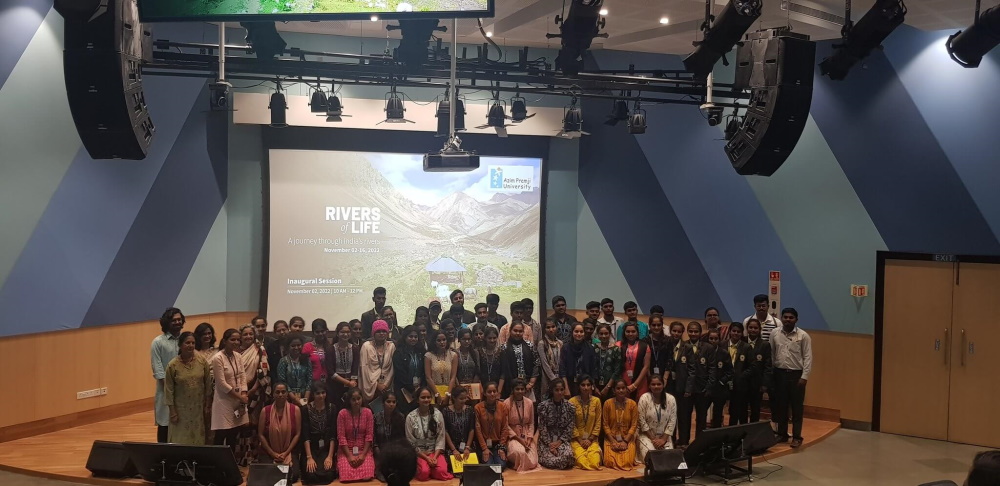
Photo: Paani.earth
Why is it important for society to know the relationship between people and rivers?
We all have a responsibility to protect our rivers not because they are a resource but because human lives are integrated with them. We now say we live next to MG Road. There were times when we said we lived on the north or south shore of say Godavari. People are surprised to know the relationship between Delhi and Yamuna or Mumbai and Mithi. It is not their fault, people are busy and no one really talks about the sad state of rivers in our cities. It is not merely a question of saving our rivers but even recognising something small as not throwing plastic into the river. Our workshops and talks have been designed like that, where people will tell the stories of the rivers they have worked on and how every cell of a river is important.
There is so much art on rivers. They embody the human spirit. Heroes and heroines in our films talk about rivers, love stories and sad stories are written around them. There’s a river in the midst of the Russia-Ukraine war. We want to bring out this multi-layered relationship that humans share with rivers.
Jashvitha Dhagey developed a deep interest in the way cities function, watching Mumbai at work. She holds a post-graduate diploma in Social Communications Media from Sophia Polytechnic. She loves to watch and chronicle the multiple interactions between people, between people and power, and society and media.
Cover photo: A photo of Wular lake in Bandipore, Jammu and Kashmir, clicked by Muzamil Bhat, is on display at the Rivers of Life exhibition.

